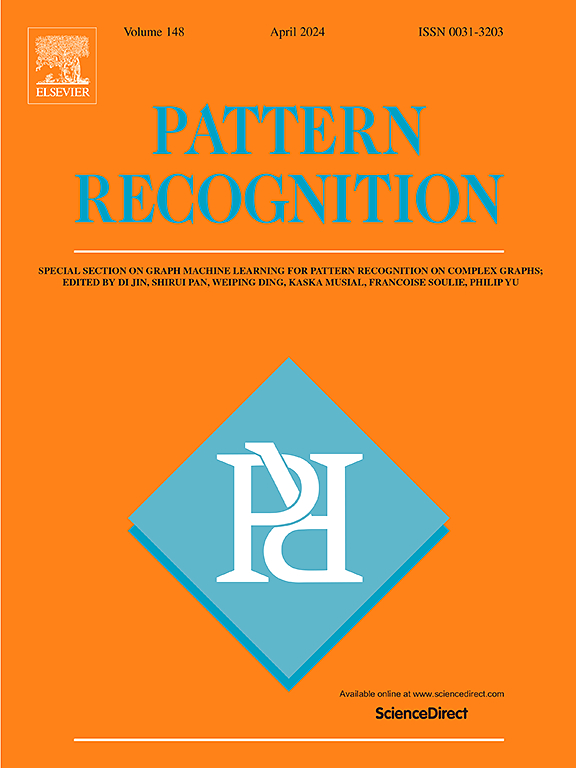TransMatch: Transformer-based correspondence pruning via local and global consensus
IF 7.6
1区 计算机科学
Q1 COMPUTER SCIENCE, ARTIFICIAL INTELLIGENCE
引用次数: 0
Abstract
Correspondence pruning aims to filter out false correspondences (a.k.a. outliers) from the initial feature correspondence set, which is pivotal to matching-based vision tasks, such as image registration. To solve this problem, most existing learning-based methods typically use a multilayer perceptron framework and several well-designed modules to capture local and global contexts. However, few studies have explored how local and global consensuses interact to form cohesive feature representations. This paper proposes a novel framework called TransMatch, which leverages the full power of Transformer structure to extract richer features and facilitate progressive local and global consensus learning. In addition to enhancing feature learning, Transformer is used as a powerful tool to connect the above two consensuses. Benefiting from Transformer, our TransMatch is surprisingly effective for differentiating correspondences. Experimental results on correspondence pruning and camera pose estimation demonstrate that the proposed TransMatch outperforms other state-of-the-art methods by a large margin. The code will be available at https://github.com/lyz8023lyp/TransMatch/.
TransMatch:通过局部和全局共识进行基于变换器的对应剪枝
对应关系剪枝的目的是从初始特征对应集中过滤出错误的对应关系(又称异常值),这对于图像配准等基于匹配的视觉任务至关重要。为了解决这个问题,现有的大多数基于学习的方法通常使用多层感知器框架和几个精心设计的模块来捕捉局部和全局上下文。然而,很少有研究探讨局部和全局共识如何相互作用以形成内聚特征表征。本文提出了一种名为 TransMatch 的新型框架,它充分利用 Transformer 结构的全部功能来提取更丰富的特征,并促进渐进的局部和全局共识学习。除了加强特征学习,Transformer 还是连接上述两种共识的有力工具。得益于 Transformer,我们的 TransMatch 在区分对应关系方面出奇地有效。在对应关系剪枝和相机姿态估计方面的实验结果表明,所提出的 TransMatch 在很大程度上优于其他最先进的方法。代码可在 https://github.com/lyz8023lyp/TransMatch/ 上获取。
本文章由计算机程序翻译,如有差异,请以英文原文为准。
求助全文
约1分钟内获得全文
求助全文
来源期刊

Pattern Recognition
工程技术-工程:电子与电气
CiteScore
14.40
自引率
16.20%
发文量
683
审稿时长
5.6 months
期刊介绍:
The field of Pattern Recognition is both mature and rapidly evolving, playing a crucial role in various related fields such as computer vision, image processing, text analysis, and neural networks. It closely intersects with machine learning and is being applied in emerging areas like biometrics, bioinformatics, multimedia data analysis, and data science. The journal Pattern Recognition, established half a century ago during the early days of computer science, has since grown significantly in scope and influence.
 求助内容:
求助内容: 应助结果提醒方式:
应助结果提醒方式:


